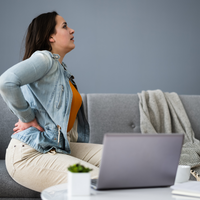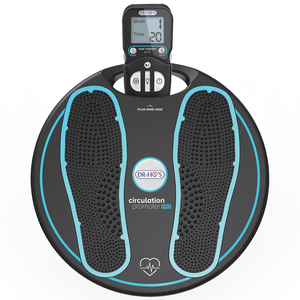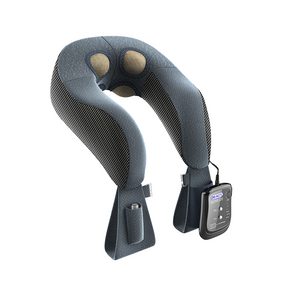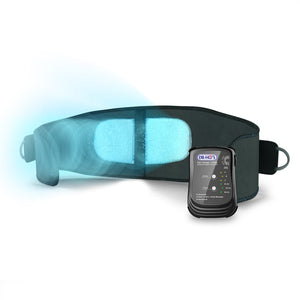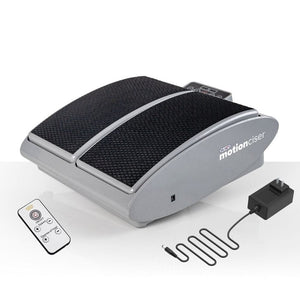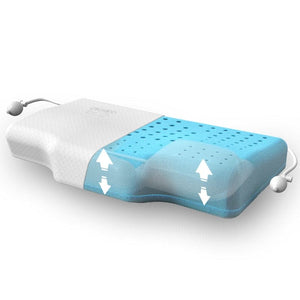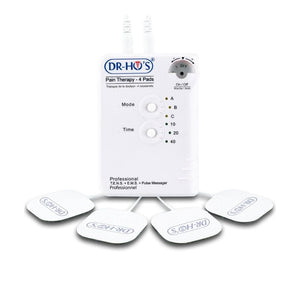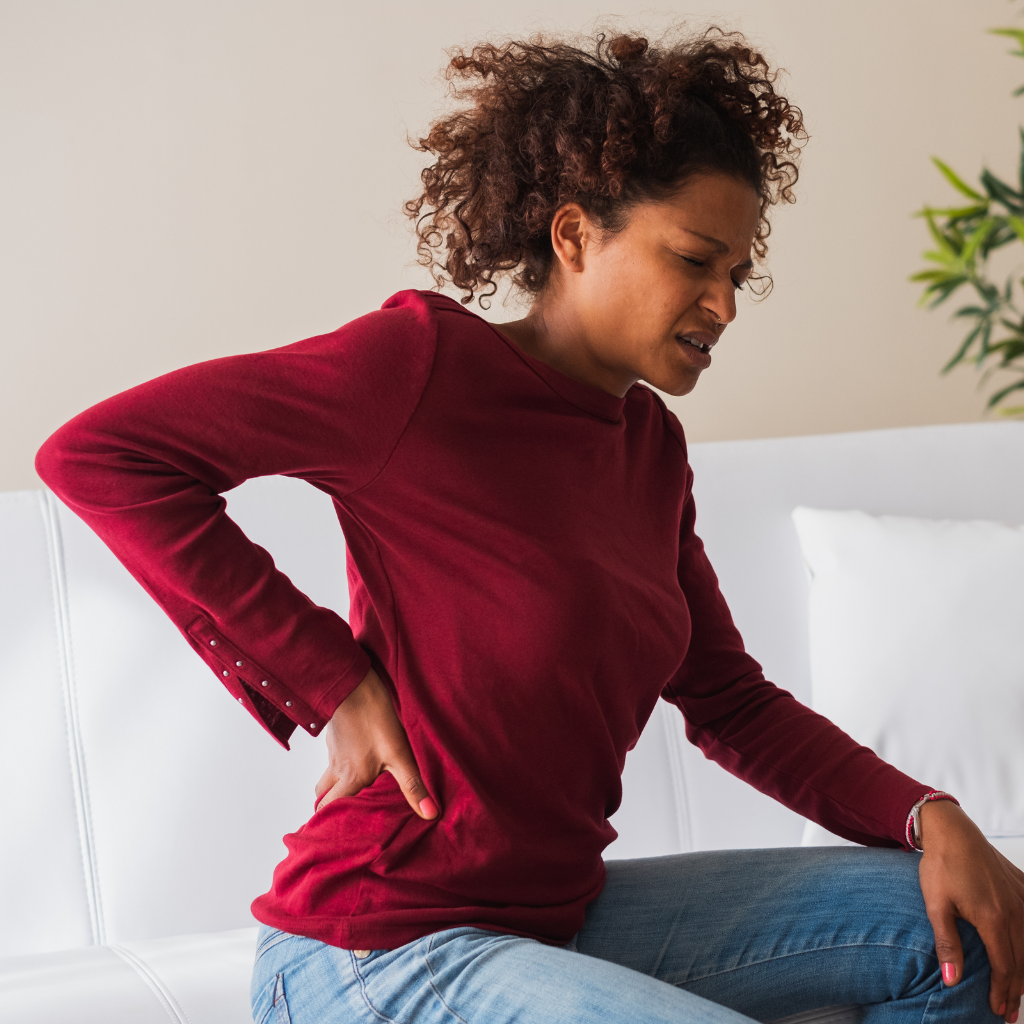Breaking down lower back pain.
First things first: If you have had or are experiencing chronic or acute lower back pain, you are not alone.
According to the American Chiropractic Association, 50% of all working adults report having back pain each year. Lower back pain is the leading cause of activity limitation and work absence throughout much of the world.
And while it’s very common, there are ways to find relief from the pain and discomfort. Let’s break down some of the causes of lower back pain, examine why it's so common and finish off with some techniques that will allow you to better manage pain and move through your day with greater ease!
Why is lower back pain such a common problem?
Unlike the neck (the cervical spine) and mid-back (the thoracic spine), the lower back only has five vertebrae in the lumbar region. These vertebrae are maintained by round, rubbery pads called intervertebral discs that act like shock absorbers throughout the spinal column to cushion the bones as the body moves. They also protect the nerves in the lower back.
Your lower back is where your upper body connects to the pelvic area, bearing much of the weight of your upper body. With such a heavy workload, the lower back is prone to stress and strain, while the discs we talked about can degenerate over time, exposing the vertebrae and the nerves. Over time, wear and tear can cause more regular lower back pain that may become chronic.
What can cause lower back pain?
Most lower back pain cases are mechanical in nature — meaning they are not caused by very serious conditions like inflammatory arthritis, infection, fracture or cancer. Some examples of non-organic causes include:
- Degenerative problems: Disc degeneration, general spine degeneration
- Injuries: Sprains (overstretched or torn ligaments), strains (tears in tendons or muscle) from sports, accidents and falls.
- Congenital conditions: Skeletal irregularities, including scoliosis (a curvature of the spine), lordosis (an abnormally exaggerated arch in the lower back), kyphosis (excessive outward arch of the spine) and spina bifida.
- Nerve and spinal cord problems: Sciatica, spinal stenosis, herniated or ruptured disc, infections involving the vertebrae and osteoporosis (a progressive decrease in bone density).

Are there risk factors for the development of lower back pain?
Anyone can experience lower back pain at any point in their life. The following factors can increase the risk:
- Age: The risk of back pain becomes more common as we age.
- Fitness level: A lack of physical activity can lead to lower back pain as deconditioned muscles in the back and abdomen may not properly support the spine.
- Job-related factors: Those whose jobs require heavy lifting, pushing, pulling and particularly twisting the spine are at higher risk of getting lower back pain. Those who sit at a desk for extended periods, especially with poor posture and chairs with not enough support are also likely to experience this pain.
- Psychological factors: Stress, anxiety and depression affect how we feel and think about pain, and can aggravate the existing pain.
What are the symptoms of lower back pain?
Symptoms of lower back pain can range in intensity, from a dull and constant ache to a shooting, sharp pain. Sometimes, you will feel the pain as you are bending or doing some heavy lifting while other times you may not know what caused the pain.
Other symptoms of lower back pain include:
- Stiffness: You may find it tough to move or straighten your back. You may also find it difficult to get up from a seated position, or you may need to walk or stretch to loosen up. Decreased range of motion is another noticeable symptom.
- Posture problems: Lower back pain symptoms can sometimes result in crooked, bent or slouching posture. You may find it hard to stand straight with your torso off to the side rather than aligned with your spine.
- Muscle spasms: Spasms can happen after a strain on the lower back. These spasms often feel like a sudden and tense contraction that leads to discomfort and reduced mobility.
5 effective ways you can find relief from lower back pain!
So, what now? With a better understanding of lower back pain, it’s time to dig into methods of relief and pain management. Your back pain may be chronic, but that doesn’t mean it needs to keep you inactive and emotionally drained. Try out these methods and see if they work for you!
1. Lumbar/Core strength and stability exercises
Lower back exercises that engage the core and lumbar muscles can potentially help to restore balance to the spine, which then helps with reducing pain and lowering the risk of experiencing lower back pain.
Lack of flexibility in the lower back and hips can contribute to lower back pain. Therefore, it is important to target this area with movements that promote flexibility. However, make sure all stretches are “pain-free”, as soon as you feel any discomfort, it may be that your body is not ready for that stretch just yet. Remember to always listen to your body!
Prayer - Cat - Camel
- Step 1: Start on all fours.
- Step 2: Prayer - Exhale as you sit back onto your heels, lower your head, tuck your chin and reach your arms out.
- Step 3: Cat - Inhale as you arch the back up and hollow out abdominals while the head remains tucked.
- Step 4: Camel - Exhale and lower your abdomen, and reach your chin towards the ceiling.
- Step 5: Tuck your chin and sit back into Prayer position.
- Step 6: Repeat this movement 5 times.
Supine Twist
- Step 1: Lie on your back on the floor with hips and knees bent to 90 degrees with feet flat on the floor.
- Step 2: Draw in abdominal muscles and maintain them throughout the exercise.
- Step 3: Slowly and with control, rotate your knees to one side keeping your hips in contact with the floor.
- Step 4: Engage obliques to pull knees back to center and repeat on the opposite side.
- Step 6: Repeat this exercise 10 times.
2. Stretching exercises
Stretching the lower back muscles and ligaments that support the spine can be very beneficial for those looking for a natural way to relieve lower back pain. Benefits of stretching include:
- Alleviating tension in the muscles that support the spine as built-up tension in these muscles can lead to prolonged pain.
- Improving range of overall mobility, balance and flexibility.
- Reducing the risk of disability caused by lower back pain.
Below are a few introductory lower back stretches that can easily be added to your daily routine:
Back Flexion Stretch
- Step 1: Lie flat on your back.
- Step 2: Pull both knees towards the chest while simultaneously flexing the head forward until a comfortable stretch is felt across the mid and low back.
- Step 3: Hold the stretch for 15 to 30 seconds to adequately lengthen muscles and improve range of motion.
- Step 4: Repeat the stretch between 2 and 5 times.
Piriformis Muscle Stretch
- Step 1: Lie on the back with knees bent and both heels on the floor.
- Step 2: Cross one leg over the other, resting the ankle on the bent knee.
- Step 3: Gently pull the bottom knee toward the chest until a stretch is felt in the hips.
- Step 4: Hold the stretch for 15 to 30 seconds.
- Step 5: Repeat the exercise with the other leg.
3. Low-impact aerobics
Low-impact aerobics such as walking, stationary bikes, swimming and step machines can help promote circulation to relieve pain and support healing from injuries without jarring the spine. Reports have also shown that people who regularly do aerobic exercises experience fewer recurring pain episodes and are more likely to manage better when pain flares. Plus, physical activity paired with a healthier diet can help strengthen your body and keep weight off, which will help to keep undue strain off the lower back.

4. Mindfulness practice
At its core, mindfulness meditation can help you focus on the present moment while maintaining an accepting and non-judgmental attitude towards certain experiences (pain, negative thoughts and emotions). As such, meditation may help with changing the relationship between individuals and their pain while reducing unhealthy fear and avoidance (also known as pain catastrophizing).
Try this common mini-meditation technique whenever you feel a flare coming!
- Step 1: Take a moment to pause (instead of immediately reacting to the challenge or pain).
- Step 2: Noticing what is happening right now in your body, mind, and heart (the thoughts, images, emotions, and sensations that are occurring).
- Step 3: Focusing on noticing your breath, of the air moving or the belly rising and falling with each breath.
- Step 4: Noticing that the rest of your body and mind.
- Step 5: Making a mindful decision about, as opposed to reacting automatically about, what to do next (if anything).
5. A TENS-enabled support belt for the lower back
Those who suffer from lower back pain may have heard of back braces or other lumbar support belts that work to help stabilize the lower back. DR-HO’S Triple Action Back Belt from DR-HO’S also uses pain therapy technologies to target and relieve pain, in addition to providing ergonomic support to the lower. Here’s how it works:
The Triple Action Back Belt is a TENS- and EMS-enabled device that uses safe, gentle electrical stimulation to temporarily relieve chronic, intractable pain and soothe sore muscles.
TENS (Transcutaneous Electrical Nerve Stimulation) stimulates the nerves to help reduce pain signals sent to the brain and provide temporary relief of pain. Additionally, TENS therapy is thought to aid in the release of endorphins — a naturally-occurring chemical that helps the body relieve and manage pain.
EMS (Electrical Muscle Stimulation) gently stimulates the muscles, causing them to contract and relax in order to increase local circulation and address muscle soreness.
Proprietary AMP Technology (Auto Modulating Pulse) from DR-HO’S is a feature that sets this device apart from other back braces. This technology keeps the therapies effective over time, with constantly changing and unpredictable stimulation.
The Triple Action Back Belt also features a built-in Lumbar Support Cushion and Dual-Core Support Band. The belt can be inflated to your comfort to help you find lumbar and core support whenever you need it. The support cushion works to help realign the user’s posture into a more ergonomic position, taking the weight off of discs and joints in the spine, and encouraging correct posture.
It’s a device that can not only help you when pain strikes but can also be worn to improve posture and increase support in your daily life.

Manage and relieve lower back pain on your own terms!
Back pain is a very difficult thing to cure outright. But don’t be discouraged! By committing to a healthier lifestyle devoted to physical and emotional self-care, it is possible to manage back pain effectively on a day-to-day basis. Hopefully, the tips above will help you manage and relieve your lower back pain on your terms!
Learn more about Back Pain on the DR-HO’S Blog!
Back Pain: Causes, Symptoms, and Treatments
The Triple Action Back Belt Product Guide
3 Ways DR-HO’S Triple Action Back Belt Helps Relieve Back Pain at Home
What is a Back Spasm? We Answer Common Questions About Back Spasm Pain
The Decompression Belt Product Guide
How DR-HO’S Triple Action Back Belt Outperforms Other Back Support Belts
Mckenzie Back Exercises: A Video Breakdown for Back Pain Sufferers
Poor Posture & Back Pain: X Ways to Find Lower Back Support & Pain Relief
Back Decompression Therapy: What is It | How it Works | Can it Help Back Pain
Muscle Spasms in the Lower Back: Know the Causes & How to Find Relief

